第16章
Some insects copulate and the offspring are produced from animals of the same name, just as with the sanguinea; such are the locusts, cicadae, spiders, wasps, and ants.Others unite indeed and generate;but the result is not a creature of the same kind, but only a scolex, and these insects do not come into being from animals but from putrefying matter, liquid or solid; such are fleas, flies, and cantharides.Others again are neither produced from animals nor unite with each other; such are gnats, 'conopes', and many similar kinds.In most of those which unite the female is larger than the male.The males do not appear to have spermatic passages.In most cases the male does not insert any part into the female, but the female from below upwards into the male; this has been observed in many cases (as also that the male mounts the female), the opposite in few cases; but observations are not yet comprehensive enough to enable us to make a distinction of classes.And generally it is the rule with most of the oviparous fish and oviparous quadrupeds that the female is larger than the because this is expedient in view of the increase of bulk in conception by reason of the eggs.In the female the part analogous to the uterus is cleft and extends along the intestine, as with the other animals; in this are produced the results of conception.This is clear in locusts and all other large insects whose nature it is to unite; most insects are too small to be observed in this respect.
Such is the character of the generative organs in animals which were not spoken of before.It remains now to speak of the homogeneous parts concerned, the seminal fluid and milk.We will take the former first, and treat of milk afterwards.